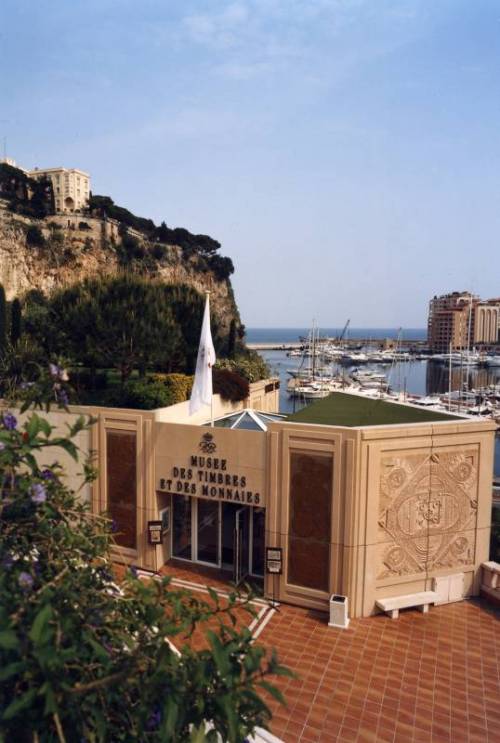HelloMonaco continues its series on the splendid sculptures hidden around Monaco with part two of the treasures tucked away in the Condamine area, works of art that hold great significance and have very intriguing historical backgrounds.
Nestled amongst the flowerbeds in-between the entrance to the Monaco train station and the Church of Sainte Devote, there is another intriguing sculpture. It is a graceful representation of the iconic figure of Sainte Devote created by artist Cyril de La Patellière.

Saint Devote is the patron saint of Corsica and Monaco and her story is of great importance to the history and traditions of the Principality of Monaco. Legend says that she was a Corsican woman born around 283AD who chose to devote herself fully to the service of God; she was killed during the Diocletian persecution by the prefect Barbarus for her faith in Christianity. She suffered a painful death but Christians saved her from being burnt, placing her on a boat bound for Africa in the hopes of giving her a proper burial. It was on this journey that the boat was rocked by a storm and a dove emerged from the mouth of Sainte Devote to guide them safely to the Principality of Monaco, where she was finally laid to rest. The symbolic piece was inaugurated by the royal family of Monaco in 1997 and holds its value to this day – some form of the legend of the martyr “Santa Devota” can be found in every church in the Principality and is even represented on some coins.
The cult of Sainte Devote is a sacred part of the Monegasque identity; the first ever book written entirely in Monegasque by the Monegasque poet Louis Notari was called “A Legenda de Santa Devota” (The Legend of Sainte Devote).
The French sculptor and illustrator, De La Patellière, commissioned by Prince Rainier III created the mystical sculpture using bronze and marble. He came from a family of artists and around age 11 he chose to go down the same path, studying at the National School of Decorative Arts in Nice, he experimented with various art forms such as graphic design, lithography and restoration before he found his true vocation in creating sculptures. He has had orders from different cities around the world including Rome, Brussels, Tokyo and Washington – his exemplary work is exhibited worldwide.

Just opposite the Sainte Devote church is yet another racing car sculpture; an almost life-sized bronze sculpture of a Formula One driver appropriately placed on the famous Grand Prix track. Placed by the first corner of the track, it is a permanent reminder of the very first winner of the Monaco Grand Prix races in 1929: William Grover-Williams. He was half English-half French and was born in Montrouge – as well as being a successful Grand Prix motor racing driver, he was also a special agent working for the Special Operations Executive in France. He organised the Chestnut network; one of the many groups tasked with gathering and relaying information about the enemy during World War II. Ultimately he was arrested by the Nazi Party’s intelligence agency and held prisoner in a horrific concentration camp, Sachsenhausen, where he was killed a few weeks before the end of the war. In the sculpture he is depicted driving the same car he raced with in Monaco, the Bugatti 35B. The statue is moved out of the way during the races, naturally, but is always returned to its rightful place once the excitement fuelled event is over.
The man who created this piece was Francois Chevalier, a race driver himself he always had a strong passion for cars, although he grew up in German-occupied France in 1942 with his father who never owned one. He purchased his first car before he was even old enough to get a drivers license! He was the former manager of the Paul Ricard circuit in the South of France, before the chief executive of the Formula One Group forced him to resign – a blessing in disguise as he began to concentrate on his talents as a drawer and sculptor, making him better known than he ever had been. He never had an art lesson in his life, but that didn’t stop him from becoming a success; his art was highly sought after and he was commissioned to create pieces such as the racecar in Monaco. Most of his work consists of pen and wash sketches, drawings that are used for historic race posters, where the cars always hold centre stage.
As well as these sculptures, the Condamine is home to another couple of art pieces that seem to be unnamed, but nevertheless deserve to be included in this series for the beauty and elegance that they bring to the area.

The first sculpture you surely would’ve noticed walking through the Condamine Square or driving past on Quai Albert 1er, is of two marble women interestingly attached to the side of one of the corner building at the entrance of the pedestrian passage, just above the ‘tabac’ shop. They seem to be effortlessly placed there, two figures watching over the people in the Square, looking like close friends chatting to one another.
Also hidden away on one of the side streets near the sculpture by Mornar, is a simple but enchanting fountain that adds to the allure of the area. Two large fish decorate the fountain, with their scaled tails intertwined as they sprout water into the peaceful pond encircled by an original stone wall.

If you like to share peculiar information about things you see every day with your friends and family or statues catch you attention while you are walking in the park, read also our previous material about Condamine sculptures and wonderful sculptures of the Fontvieille collection.
There are still more sculptures and more history to be revealed in the beautiful parks and gardens of Monaco!








